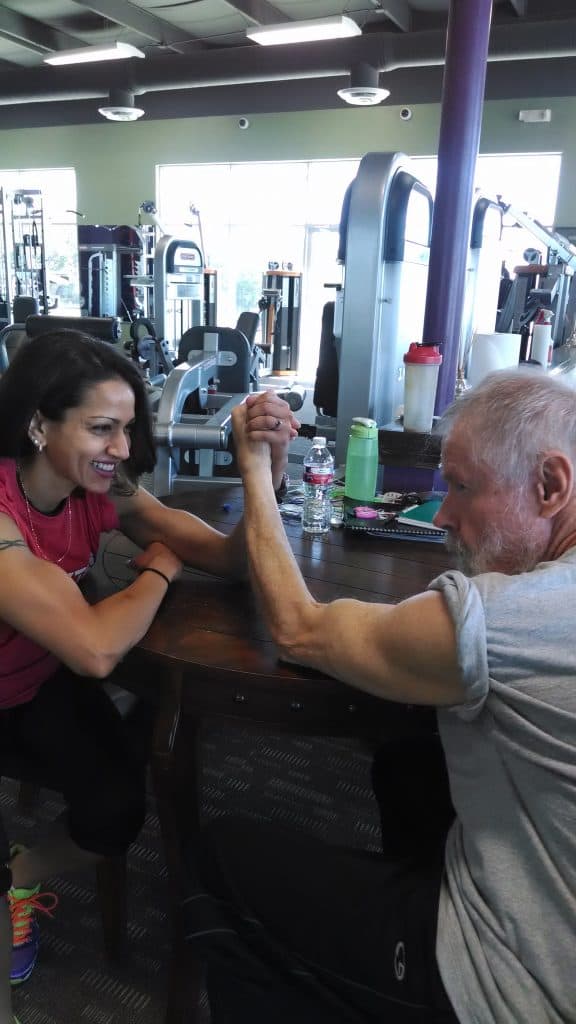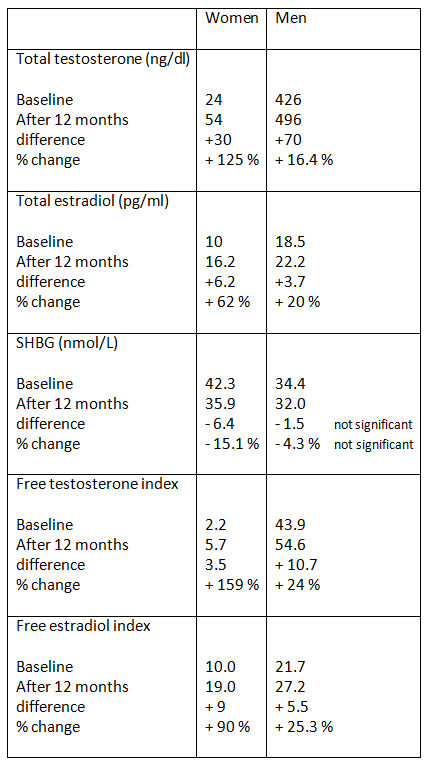I know, I know, I’ve written about this a lot. But the subject is deserving of ongoing discussion. After all, periodization is frustrating- on the face of it, the premise is both compelling and logical. Dig a little deeper though, and the problems become evident.
To illustrate, I’m sharing a question that was recently sent to me from a trainer in Australia- I’ll keep his identity private since it’s not germane to the subject at hand:
—
“Hey Charles, I’m training a Muay Thai fighter, he has had 18 fights. Wants to fight in about 18 weeks. I was planning to do some periodization for him. Was thinking EDT for the first 6 weeks: Core routine from Muscle Logic: Dumbbell Snatches Left/Right side, Squats/ Pullups, Dumbell Turkish Get-Up, and abdominal work.
Then the next six weeks I was going to introduce kettlebell work, more speed/power work etc. Increasing speed & power component as we get into the 2nd and 3rd six week blocks. As you probably know, Muay Thai fighters need to keep their weight down, and cut a bit of weight as they get close to fighting. What do you suggest to keep the program challenging and interesting with a strong weight training component without him gaining too much weight (even if it is all muscle?)”
—
Of course, the first problem (in this case) is that I don’t know the fighter’s relative strengths and weaknesses. So my response will be only generally useful at best. But with that said, this question illustrates what is perhaps the primary decision facing you when you’re thinking about how to assign workloads over a period of weeks: do you assign one type of work for a while (let’s say 3-4 weeks for the sake of this discussion), then another type of work for a while, and finally, a third type of work for the final phase of training.
Or…
Do you basically decide what type of work is needed most, and then just keep doing that type of work for the entire training cycle?
Or is there a third option?
“Traditional” Periodization
The first option is how most people think of “traditional” or “classical” periodization. After all, the very word “periodization” is rooted in the work “period,” and is defined as breaking up a long period of time into several shorter periods of time, each with a distinct character and/or objective. Now this approach hinges on two important premises, otherwise you’d never even consider using it:
#1: Jack Of All Trades, Master Of None: One important premise of the traditional approach is that if you try to improve a number of athletic attributes simultaneously, your efforts (and results) will be diminished. And this is a valid point.
#2: The Development Of Some Attributes Can Form The Foundation For The Development Of Other, More Specific Attributes: To cite an example, the development of muscular hypertrophy can help to maximize the acquisition of maximal strength during a subsequent cycle. This is because all else being equal, a thicker muscle fiber can produce more force than a thinner fiber. So the idea is you first make the fibers thicker during the hypertrophy phase, then train the nervous system to recruit those fibers more effectively during the subsequent maximal strength phase. Again, a valid premise for the traditional approach.
Before There Was Traditional Periodization, There Was…
I thought it might be worthwhile to consider how athletes trained prior to the advent of periodization. And as you might have guessed, athletes basically just practiced their sport event, whatever it happened to be. Fighters fought. Runners ran. Weightlifters lifted the heaviest weights they could, all the time. SO what premises (if any) was this approach based on? I’d submit two:
#1: Training consisted of the most specific activities possible. The principle of specificity rules.
#2: No better option had been developed (yet).
OK, so there you have it: 2 approaches, both with valid conceptual underpinnings. What I haven’t yet mentioned however, is the down-side of both approaches, so let’s explore that right now…
The Downsides
Problems With The Pre-Traditional Approach
Whenever you employ highly-specific means over long periods of time, you risk neural accommodation, psychological burnout, and overuse injuries. You also lack a procedure for taking advantage of advantages gained through more modern approaches to load-distribution. No foundational progressions, no deload cycles, and so on. Another problem as I discussed earlier is that you still have the jack of all trades problem.
Problems With The Traditional Approach
Interestingly, the traditional approach solves all of the problems I just mentioned, but in the process, new problems arise. The most troubling of these problems is the lack of continuity that plagues the traditional approach: time and energy spent on developing one attribute (for example, hypertrophy) is wasted, because said attribute deteriorates during the subsequent phase where attention is re-directed toward the development of a new attribute. As I’ve mentioned in the past, it’s like learning Spanish in first grade, French in second grade, and Italian in third grade- you never get bored, but you also never make any real progress.
Toward A Better Approach
Interestingly, the best approach to periodization may be a cross between both approaches – a concept that I’ve never seen anyone else write about. It’s an amalgam of the “serial” approach and the “concurrent” approach. In other words, you use a multi-stage, serial progression against the backdrop of a high degree of specificity. The best of both Worlds.
Let’s look at how this might look for the sport of powerlifting. Using the oldest approach we covered earlier, if you had 18 weeks to train for a meet, you’d go as heavy as possible, using sets of 1, pretty much every workout, unless you were sick or injured.
Using the second approach, you might do general fitness training for the first 3 weeks, then work on hypertrophy for 6 weeks, maximal strength for 8 weeks, and finally a deload on the 18th week.
What would a “better” approach look like?
First, you’d always put the lion’s share of your energy into the 3 competitive lifts. You might (and probably would) perform a handful of “assistance” lifts to bring up weak attributes that can’t be addressed purely by working the competitive events. These attributes might include things like injury rehab, hypertrophy, speed-strength, or work capacity. As competition nears however, less-specific work recedes to free up resources for more-specific tasks.
If recovery is needed, it is not obtained by switching to non-specific tasks or lower intensity brackets, it’s facilitated by lowering training volume. In other words, instead of performing 6×2 with 90% on the bench, you might perform 2×2 with 90%. As a powerlifter, you must live and die by the 3 competitive events. They always take priority over everything else. The only exceptions to this rule are as follows:
1) One or more of these 3 lifts causes or exacerbates an injury which now must be addressed.
2) One or more of these 3 lifts is no longer a primary weakness. An example of this might be a lifter with an exceptional bench but a poor squat. In this case it becomes prudent to redirect resources away from bench training and toward squat training.
Finally, any approach worthy of being called “better” must be capable of “turning on a dime:” as the weakest link is improved, it is no longer the weakest link, and a new weakness becomes the new weakest link. Your training approach must be flexible enough to address this reality at any given time.
The approach I’ve outlined is how all smart athletes train, and it’s how all smart trainers and coaches train their athletes. All successful training systems utilize the principles I’ve discussed above, even if you don’t know it, and even if the people using those systems don’t know it.
I hope this post sparks your creative thinking on the subject. If it has, please share your thoughts by commenting below!
Coach Charles Staley
“One of the signs of a great teacher is the ability to make the subject matter seem simple. Charles Staley is one of these rare teachers. After listening and talking to him, you suddenly achieve a new awareness of training. You go to the gym and, suddenly, everything makes sense, and you wonder why you haven’t been doing it his way since day one.”
– Muscle Media 2000 magazine August, 1999
His colleagues call him an iconoclast, a visionary, a rule-breaker. His clients call him “The Secret Weapon” for his ability to see what other coaches miss. Charles calls himself a “geek” who struggled in Phys Ed throughout school. Whatever you call him, Charles’ methods are ahead of their time and quickly produce serious results. His counter-intuitive approach and self-effacing demeanor have lead to appearances on NBC’s The TODAY Show and The CBS Early Show.
Currently, Charles competes in Olympic-style weightlifting on the master’s circuit, with a 3-year goal of qualifying for the 2009 Master’s World Championships.
More info: Staley Training Systems







Coach Staley,
Is this in line with the spirit of your article:
1) Identify the qualities that are most crucial for success in the chosen sport.
2) Identify areas where the athlete may have structural balance issues/areas that will hold the athlete back from optimal performance with maximum resistance to injury
3) During any given block of training focus in on the crucial qualities that are most lacking/areas that may be out of balance with others while still including some work for other areas that may be of importance (with the type and amount related to what level these qualities are currently at)
4) Continue to re-assess things at regular intervals to allow for re-prioritizing the qualities being trained and the areas receiving the most focus based upon the athlete’s most up-to-date performance markers and structural balance.
Perhaps I’ve watered it down in an attempt to generalize or maybe I’ve missed the mark completely.
Thank you for excellent, thought-provoking content……..or as it may as well be called, “your usual.” It’s a privilege to learn from you.
Jack I’d say you go the jist of it pretty well. Charles always does a good job of addressing the details… so good in fact that at times I find myself slightly lost. Hey, I had to read parts of that over a second time, I’ll admit it.
But still, the way he breaks sh*t down is remarkable. In the end though, you can sense the aura of common sense which surrounds this method. It’s actually very logical which is why is the reason why a lot of athletes end up training this way naturally.
Good post.
Well done Jack and thanks for your generous comments guys..
“the aura of common” I like it! 🙂
How would you apply this approach to the Tactical Athlete, whose “game day” could be any day?
Kevin, there’s a fair amount here on the site (try a search for “tactical athlete” in search box and some stuff will come up) directed at the tactical athlete as well as my site dedicated to such: OptimalSWAT. An article I had on EliteEFS may be of interest also. See:
http://articles.elitefts.com/training-articles/practical-applied-stress-training-p-a-s-t-for-tactical-athletes/
Obviously, the tactical athlete does not train for a specific date per say, but has to be physically ready 24/7. That does not prevent them however from using some periodization in their training, but even the tactical athlete has some specialized needs and performance. E.g., the needs of a SWAT officer are not the same as an Army Ranger and so forth, so specific goals of performance still need to be focused on to the job recs it would seem and a balance found in training for those needs hopefully.